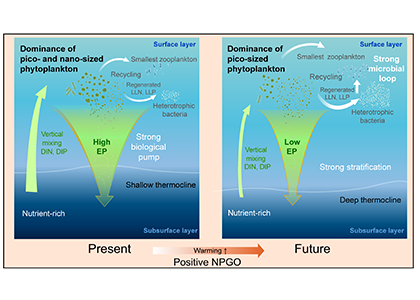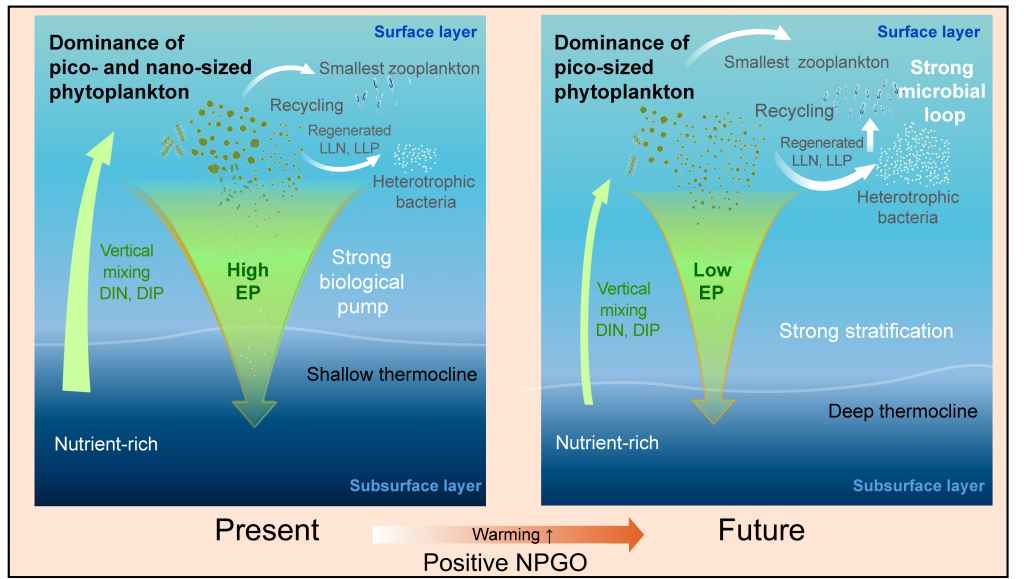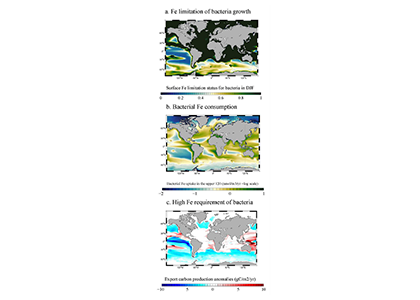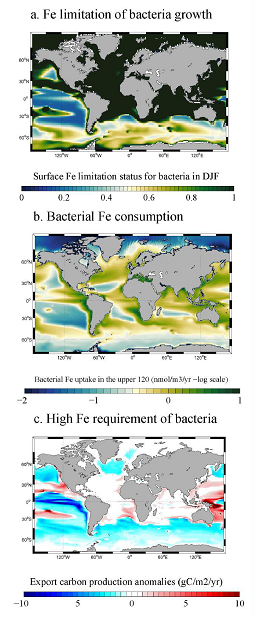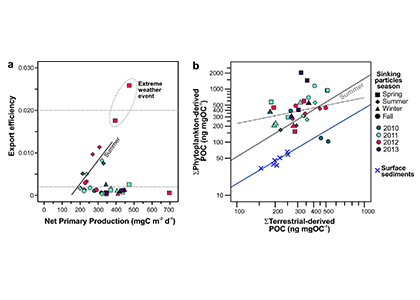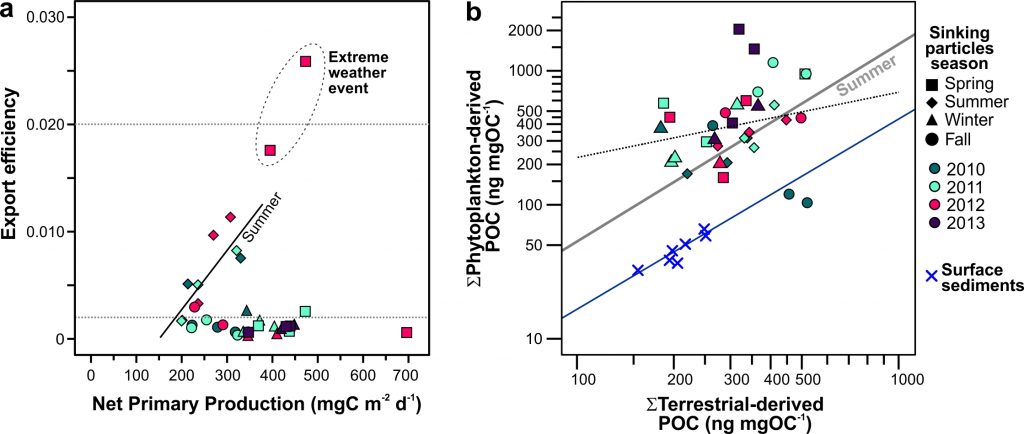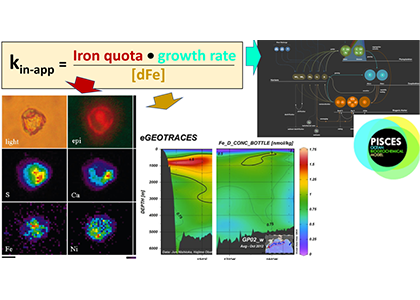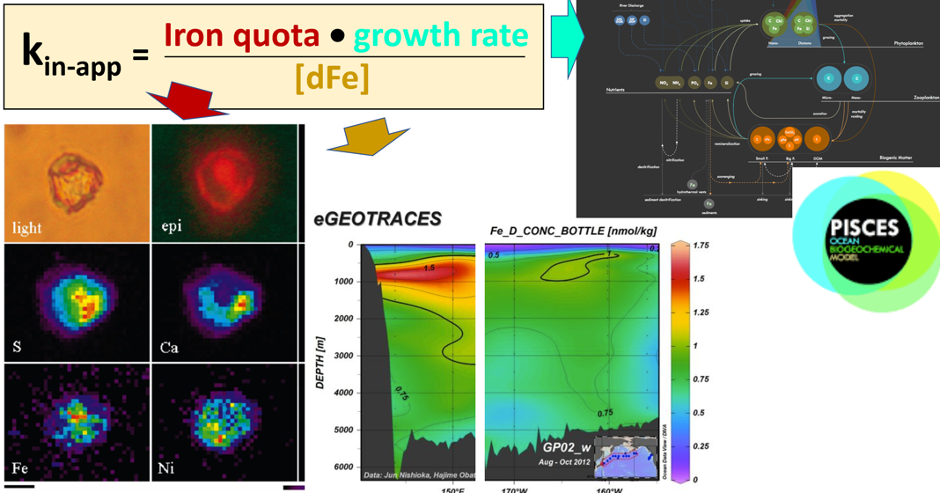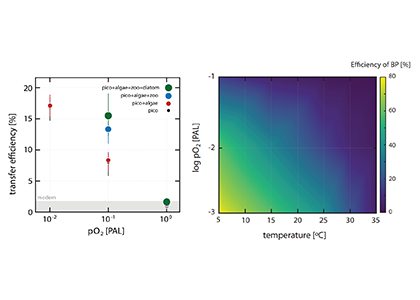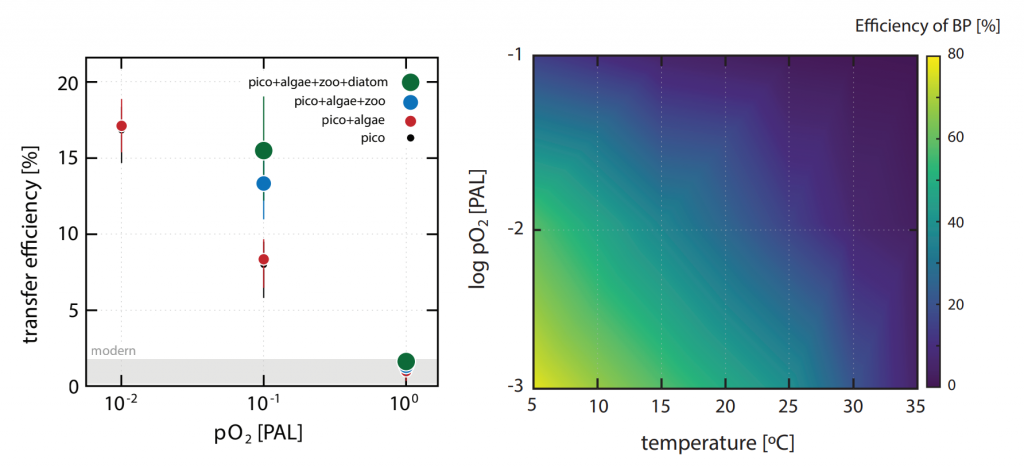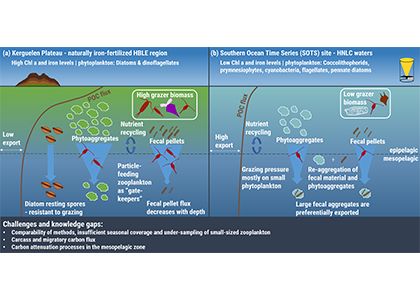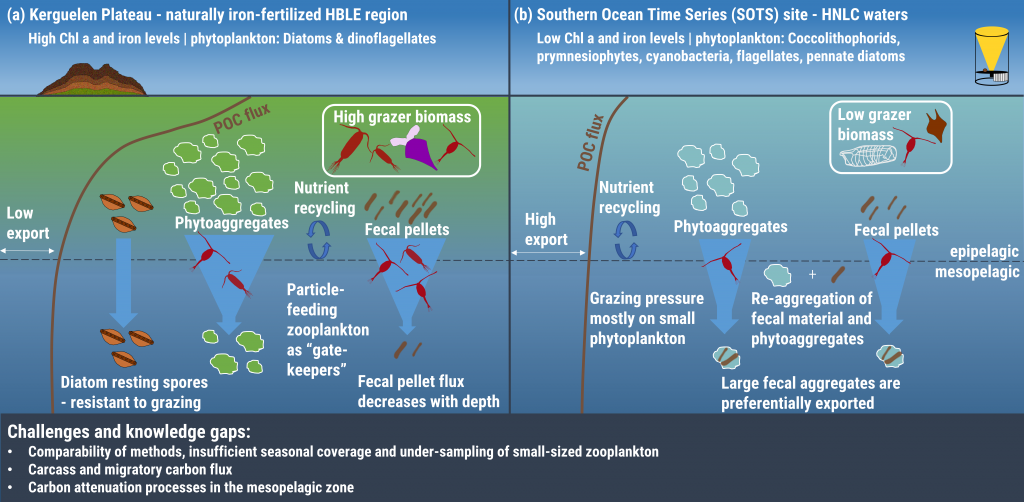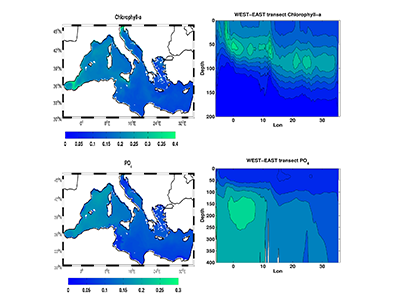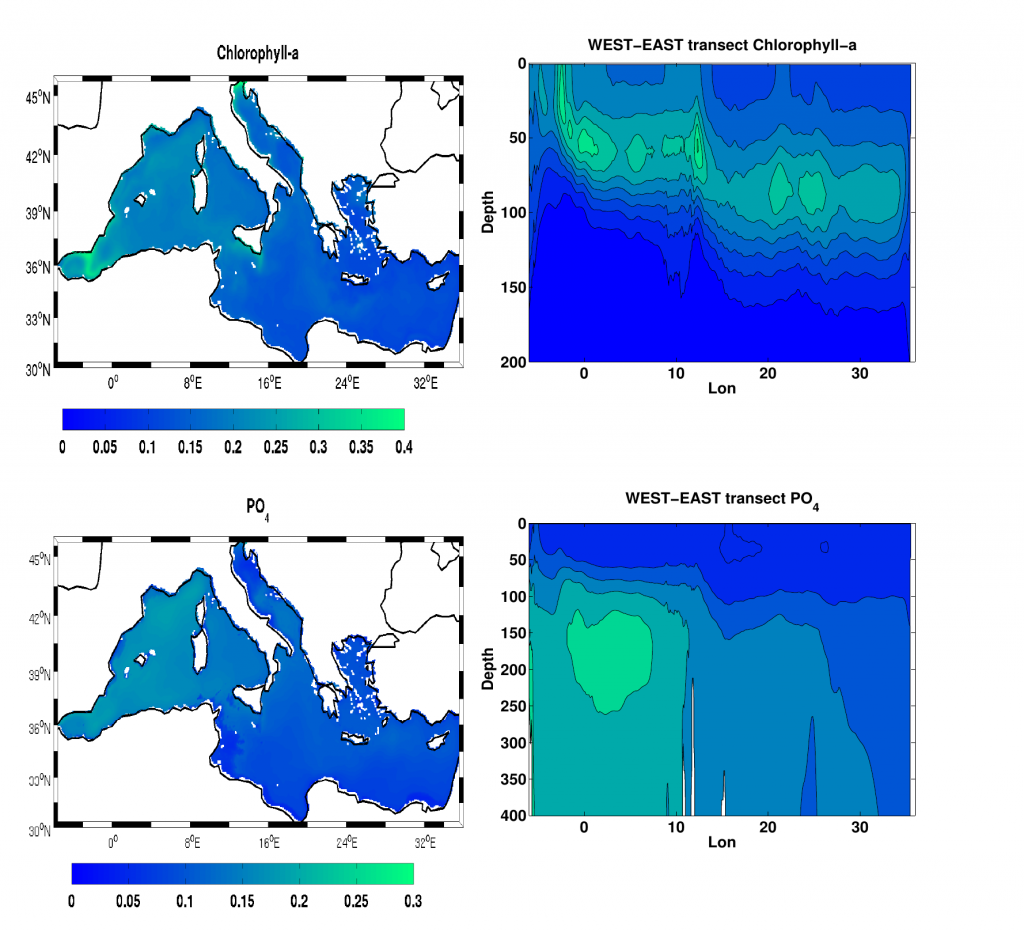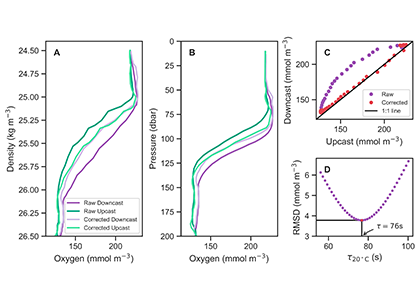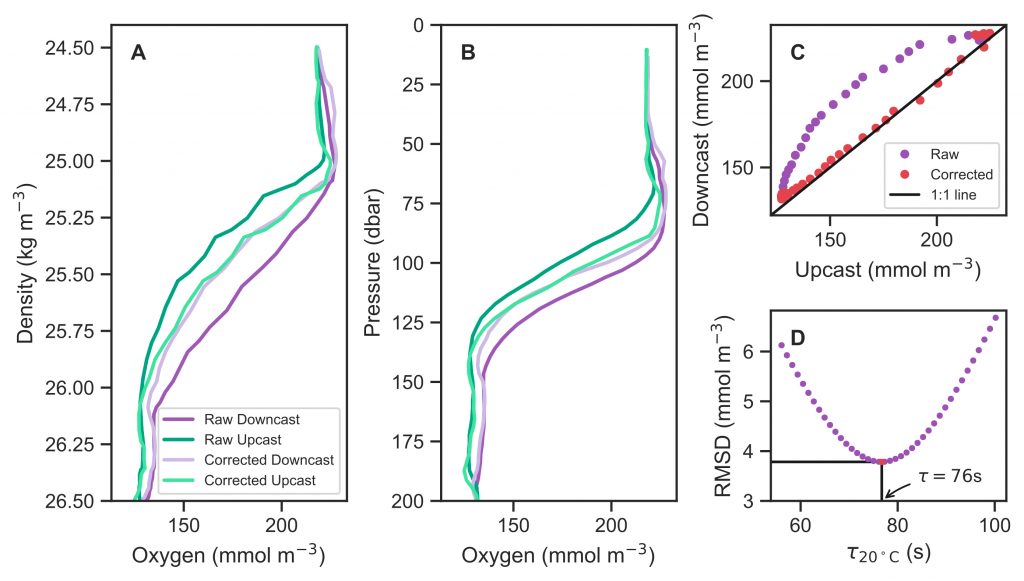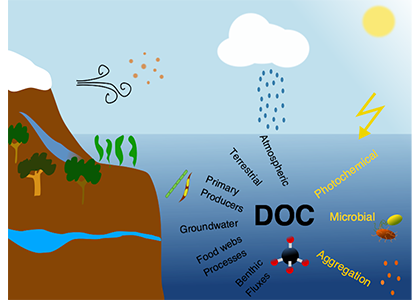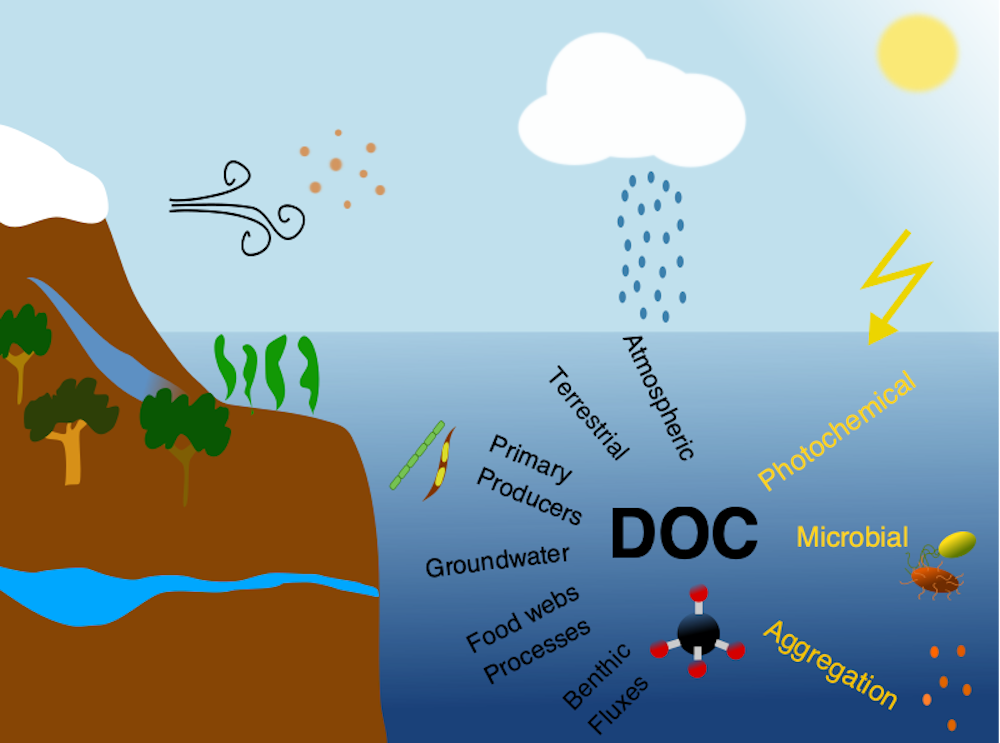Net primary productivity is a central metric in ocean biogeochemistry that is costly and time-consuming to estimate using traditional water sampling methods. As a result, it is difficult to detect large-scale trends in ocean productivity. While satellite remote-sensing has partially solved this issue, its observations are limited to the top 10 to 40 m of the ocean and require assumptions about the depth profile of productivity.
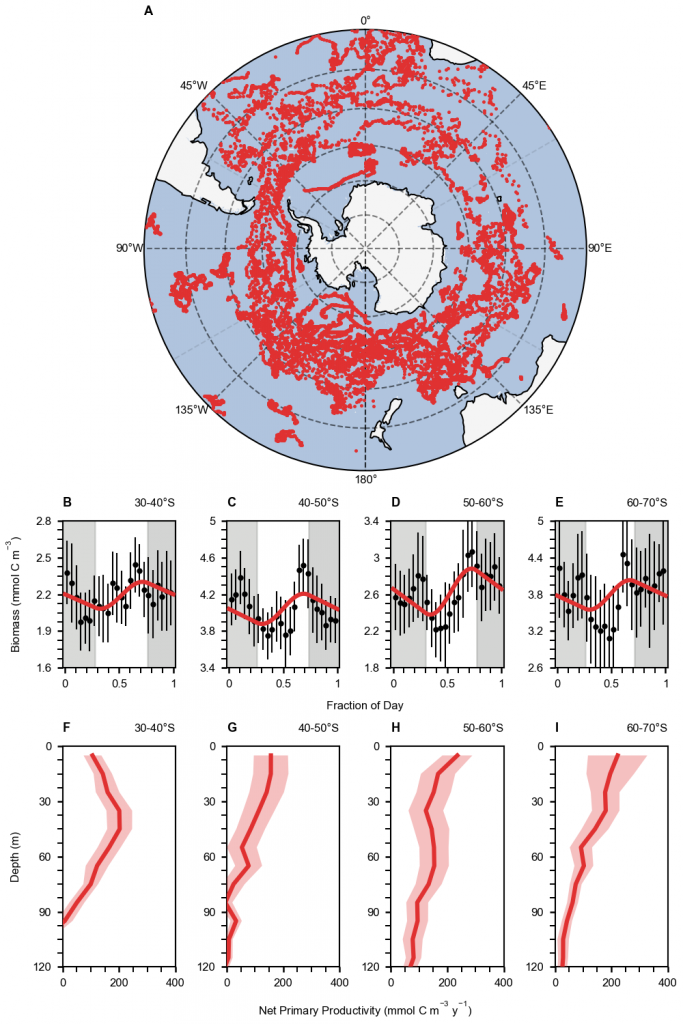
Figure 1. (A) A map of BGC-Argo float profiles of particle backscattering where only floats deemed to contain samples from all hours of the day over its lifetime were shown. (BE) The hourly median (black points) and standard error (black vertical lines) of carbon biomass, estimated from particle backscatter. Over a 24-hour period, carbon biomass shows a net accumulation during the day (white space) and net loss during the night (gray space). This daily rhythm in biomass was used to infer gross primary productivity from a sinusoidal model fit that assumes productivity scales with light, community respiration is constant, and net community production is zero. (FI) Profiles of net primary productivity, shown with one standard error (shaded region), can be inferred from these daily cycles available for each depth and region. To estimate net primary production, we estimate gross oxygen production from gross primary (carbon) productivity assuming a photosynthetic quotient of 1.4 and that dissolved primary production is a third of total primary production. We then used an empirical ratio (equal to 2.7) to convert gross oxygen production to net primary productivity.
Our study addresses this problem by using BGC-Argo floats to estimate the in situ vertical structure of net primary productivity inferred from daily cycles of carbon biomass (Fig. 1). Although typical floats collect profiles every 5 or 10 days, it is possible to reconstruct the daily cycle in biomass by combining profiles from many floats that measure non-integer profiling frequencies (e.g., 5.2 or 10.2 days). These floats collect each subsequent profile at a different hour of the day, such that all hours of the day are about equally represented over the floats’ lifetimes. Combining enough of these floats’ profiles, the small daily variations in carbon biomass can be detected and used to infer net primary productivity. We demonstrate this for various depths, regions, and seasons.
Our approach provides low-cost, ground-truthed information throughout the water column across large expanses of the ocean and under various conditions (e.g., clouds, sea ice, or polar night), addressing some of the limitations of satellite or ship observations. We argue that the combination of BGC-Argo with satellite imagery will provide an invaluable tool for assessing large-scale trends in net primary production that may arise from climate change and other environmental purturbations.
Authors
Adam Stoer and Katja Fennel (Dalhousie University)
Dalhousie’s Marine Environmental Modelling Group: memg.ocean.dal.ca

